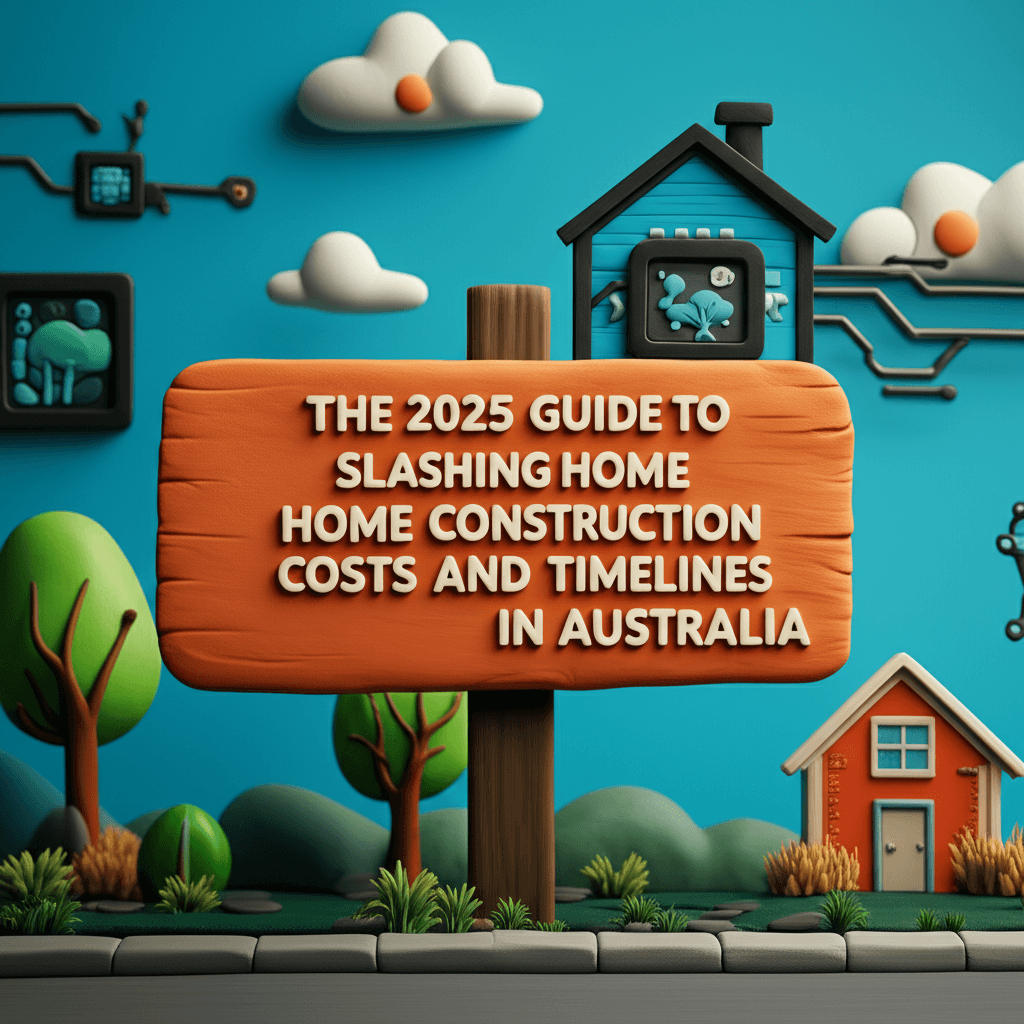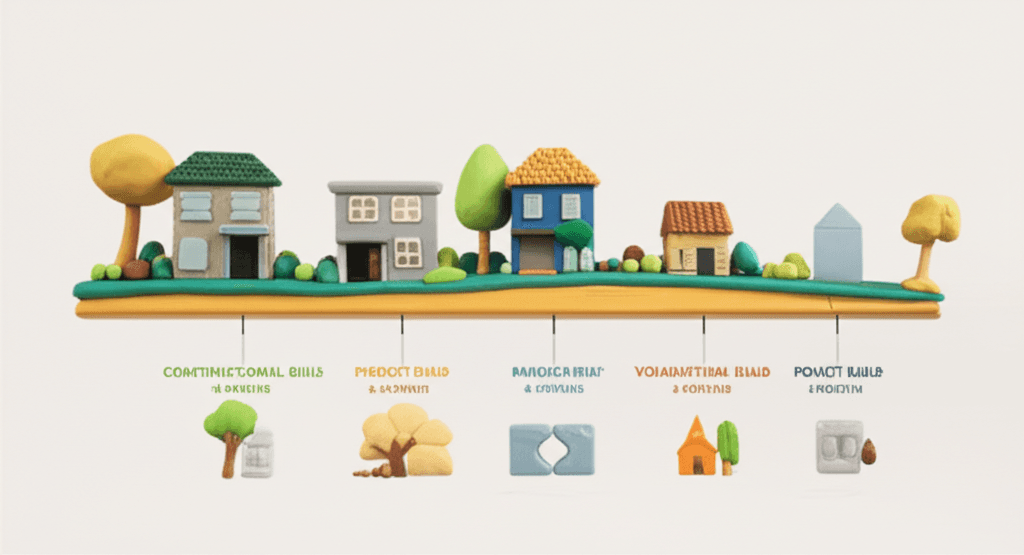The 2025 Guide to Slashing Home Construction Costs and Timelines in Australia
Discover how strategic material sourcing and prefabricated construction can save you up to 20% and cut build times from years to months.

The Challenge Facing Australian Home Builders
The Australian construction industry is at a crossroads. Aspiring homeowners and investors are grappling with soaring material costs, extended timelines, and a shortage of available builders. Traditional custom home builds are now frequently quoted at 12 to 18 months, creating significant financial strain through holding costs. While project builders offer faster turnarounds, they often lack the flexibility for custom designs. This challenging environment demands a smarter approach to building.
Combining Custom Design with Project Builder Efficiency
There is a powerful hybrid approach that merges the bespoke nature of an architect-designed home with the speed and cost-efficiency of a project build. The solution lies in two key strategies: strategic overseas material sourcing and embracing prefabricated construction. By rethinking the process from the ground up, you can achieve significant savings in both time and money, potentially saving $50,000 to $100,000 on a single build.

Strategy 1: Strategic Material Sourcing
A significant portion of Australia's building materials—over 60%—are already manufactured in China. By sourcing directly, you bypass local wholesalers and retailers, cutting out multiple layers of markups. This approach can reduce the cost of fixtures and fittings like tiles, cabinetry, windows, and doors by 20-30%. To make this viable, you typically need to import enough materials to fill at least half a shipping container. The key is to work with a reputable sourcing agent and logistics company to ensure all products meet Australian compliance standards. For a truly collaborative process, consider involving your builder in the selection, ensuring they are comfortable with the materials and warranty implications.
Strategy 2: The Power of Prefabrication (DFMA)
The most transformative shift in modern construction is prefabrication. The crucial first step is to instruct your architect to use Design for Manufactured Assembly (DFMA). This means designing your custom home in a way that allows components to be built in a factory setting. DFMA opens the door to two primary methods:
Panelized Construction: Walls are constructed as panels in a factory—either as simple frames or as complete units with insulation, wiring, and cladding. These are flat-packed, transported to the site, and assembled. A home can be made watertight in as little as five days, with the total build time reduced to around four months.
Volumetric (Modular) Construction: Entire rooms or sections of the house are fully constructed in a factory, complete with kitchens, bathrooms, and flooring. These modules are then transported to the site and craned into place. This method can get a home to the lock-up stage in just two days, with a total project completion time of about two months.

The Real Savings: It's All in the Timeline
While material savings are significant, the most substantial financial benefit of prefabrication comes from the drastically reduced timeline. Cutting a 12-month build down to two months generates massive savings in holding costs, including interest payments on your loan, land tax, and council rates. Furthermore, you can start generating rental income or move into your home 10 months earlier. This is where a detailed cost-benefit analysis, using tools like those found in our Data Analytics Hub, reveals the true financial power of modern construction methods.
A Win-Win for Builders and Consumers
This approach also presents a major opportunity for builders. By completing projects six times faster, a builder can take on more jobs within their annual license limits, significantly boosting their revenue and profitability. Tradespeople benefit from working in a controlled, indoor factory environment, eliminating weather delays and improving safety and productivity. As a consumer, partnering with your architect and builder on this journey not only saves you money but also contributes to a more efficient and sustainable construction industry.
Conclusion
The path to building a home for less in 2025 is not about cutting corners, but about building smarter. By starting with a Design for Manufactured Assembly (DFMA) approach, you unlock the potential for massive time and cost savings through prefabrication. Whether you choose to source components locally from one of Australia's 1,800+ prefab companies or explore strategic international sourcing, the result is the same: a faster, more cost-effective build that puts you financially ahead.
Ready to make smarter, data-backed property decisions? Explore HouseSeeker's Real Estate Analytics hub to analyze market trends and uncover your next investment opportunity.
Frequently Asked Questions
What is DFMA?
DFMA stands for Design for Manufactured Assembly. It's an architectural approach where a home is specifically designed to be built in sections or modules in a factory. This initial design choice is crucial as it gives you the flexibility to use either traditional on-site construction or more efficient prefabricated methods.
Is importing building materials from overseas risky?
It can be if not done correctly. The key is to avoid consumer marketplaces like Alibaba and instead work with professional sourcing agents and logistics companies. They ensure that materials are sourced from the actual factories, meet all Australian compliance and quality standards, and are handled correctly during shipping.
Can I use prefabricated construction for a single custom home?
Absolutely. While economies of scale are greater on multi-dwelling projects, a single custom home can still benefit immensely from prefabrication. The primary savings for a single build come from the drastically reduced construction timeline, which cuts down on holding costs and allows you to occupy or rent the property much sooner.
